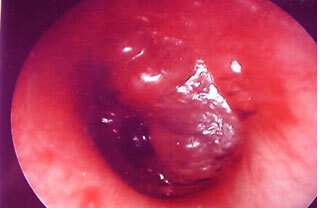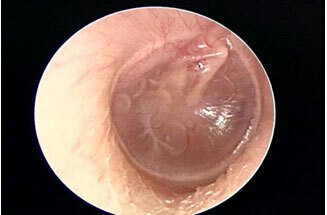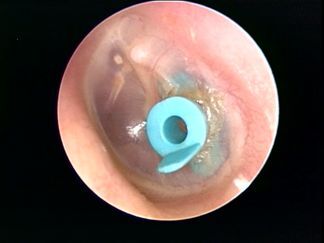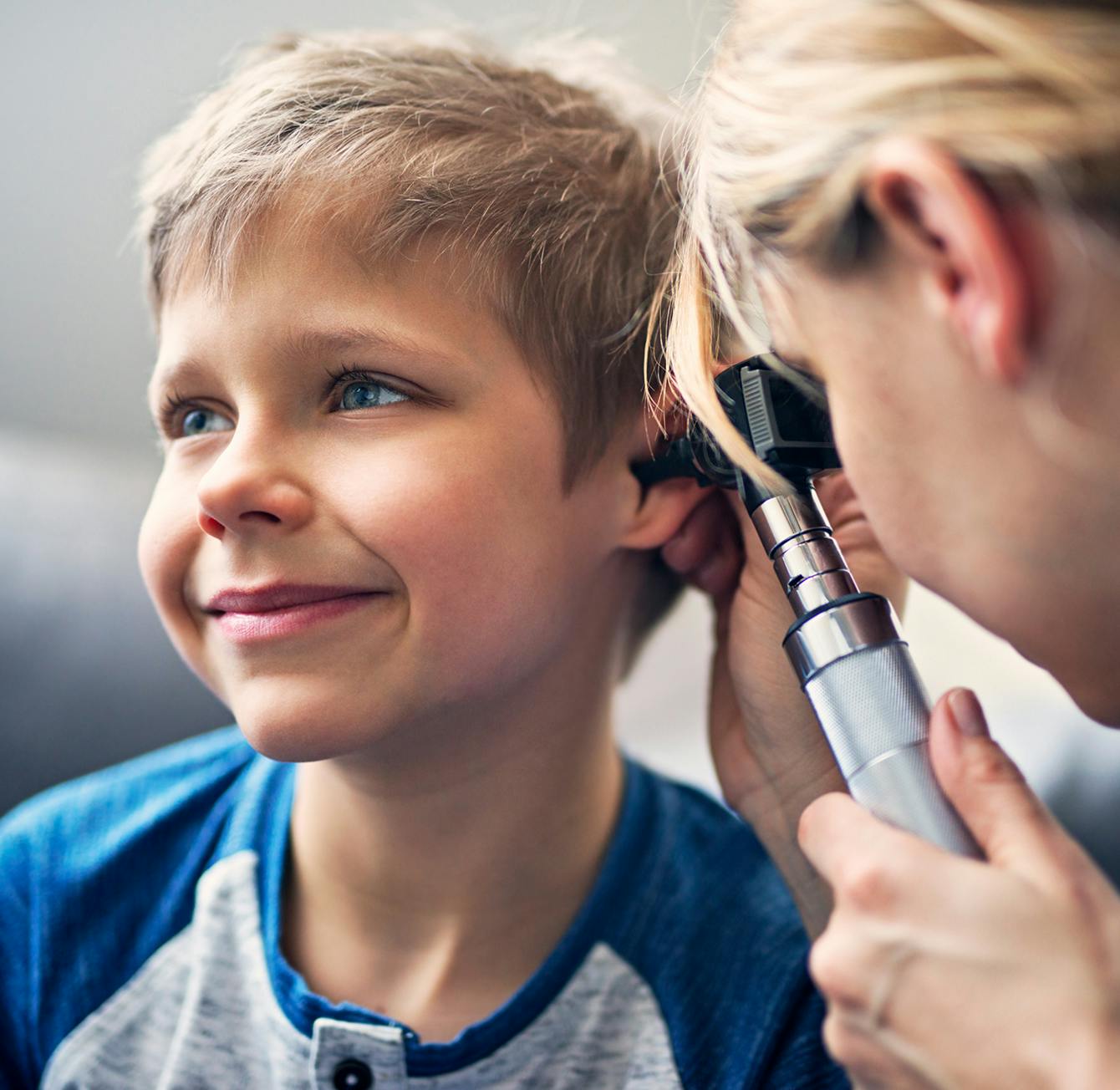Otitis media is essentially an infection of the middle ear space. This condition occurs very frequently in kids and less commonly in adults. The otitis media typically results from eustachian tube dysfunction which leads to blockage of the natural drainage pathway from the ear to the back of the nasal airway. Eustachian tube dysfunction is very common in kids and is likely worsened by viral infections such as the common cold and possibly by nasal allergies.

[Fig. 1]: Left acute otitis media.

[Fig. 2]: Right otitis media with effusion.

[Fig. 3]: Left tympanic membrane with pressure equalization tube.



